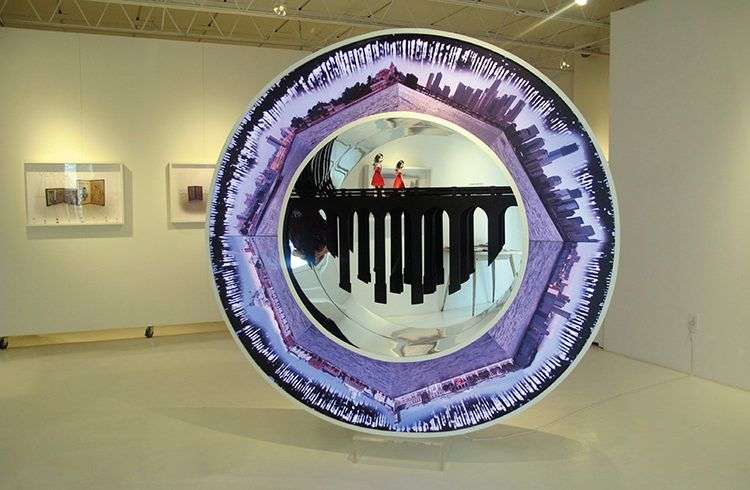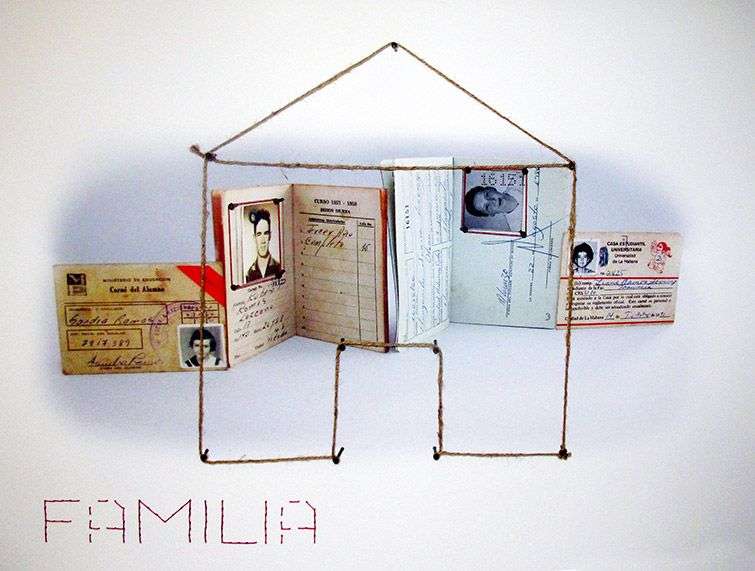Painter Sandra Ramos has made her apartment in Miami into an extension of her studio. Her table, floor, and walls hold paintings that are finished or half-finished; fragments of that world of loss and disillusionment that can be seen in her work. From one wall, the Christ of Havana observes me; a bridge emerges from his stone chest and leads to the clouds, or heaven, or maybe nowhere. The painting is called “Christ” and belongs to a series of digital prints, Puentes, from 2004. “For me, bridges are very necessary,” she admits.
“You spend your life on a bridge, and that’s good. Each person should follow his or her bridge, or path, even if in the end, you don’t know where it leads.” In her voice, you can still perceive something of that innocence that identifies the little girl, a combination of herself and Lewis Carroll’s Alice, who is the central figure in many of her paintings. That character appeared in 1993, in the first of her many solo exhibition: Manera de matar las soledades (Way of Killing Lonelinesses).
By that time, a number of the themes that have marked Sandra’s work had emerged: immigration, unattainable dreams, the crisis of the 1990s, the fall of the socialist bloc, the end of utopia; conflicts that marked Cuban society and her personally. “This little girl character initially was a self-portrait and then it almost became a symbol of my generation,” she says in an interview.
“That series includes a painting, “Mi diaria vocación de suicida” (“My Daily Vocation for Suicide”) which is one of the most important for me, because it is related to my questions about the role that artists should play in society, and their commitment to their context. In addition to personal catharsis, art also transcends the artist as an individual and becomes something shared that reflects his or her era, or time.” Maybe that is why she no longer lives in Cuba but has never stopped feeling like part of the country’s everyday reality: “I always had a certain resistance to leaving Cuba because it was where I obtained the themes for my work, and I have always felt like I have an obligation to do something for Cuban society.
In fact, I still feel that. Even though I live somewhere else for personal reasons, it doesn’t mean that I’ve stopped belonging to Cuba. Now we are going through a process of change and I think that the next five years will be very important for defining the path of Cuban society, to which we are all committed, and that goes the same for those of us outside and in [the country].” Sandra will return to Cuba in October as part of the project “Ellas crean” (“Women Create”), a festival of creative women organized by the Women’s Institute of Spain, and held for the first time in Cuba last year.
This time, Ramos will work with trova singer-songwriter Gema Corredera on the set design of the recently-restored Martí theater for a concert by Corredera. “For me it is very important to work with Gema, because my work has a lot of references to Cuban trova and I think it is positive that all artistic expressions will be linked to create a much more varied and complete show, something that enriches the public.”
In addition, Sandra views cultural exchange, especially what is currently taking place between Cuba and the United States, as vital both for the development of Cuban culture and so that Cuban artists will be recognized outside the country. “It is something that has to do with freedom; if people are limited by one side or another, that doesn’t contribute to anything. I think that exchange should not just be cultural, but also scientific. There should be a flow of people going both ways, and everybody should be able to travel and learn and come to his or her own conclusions.
That is also an important part of freedom.” She adds: “Freedom is a concept that is very difficult to classify because it varies according to the person, but I think that we all should have the freedom to be different, for our individuality to be respected, and to have freedom of movement and expression. My commitment is, above all, to freedom.”











